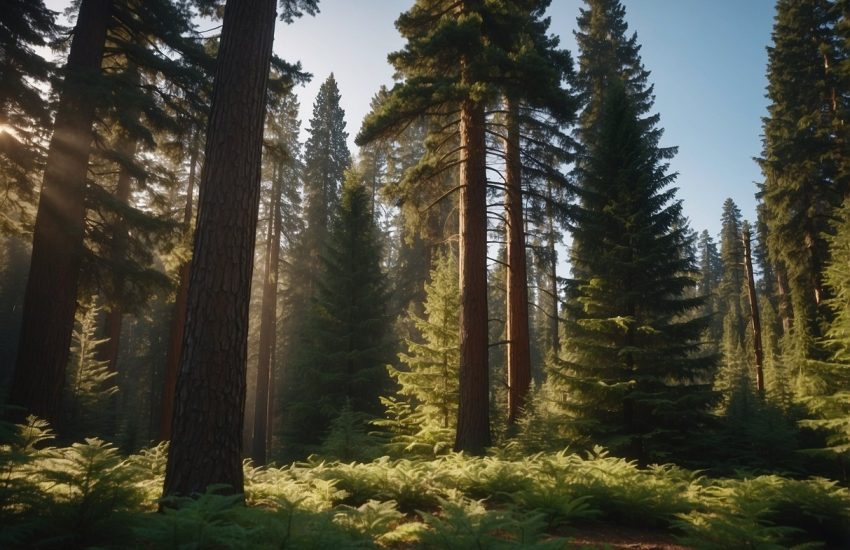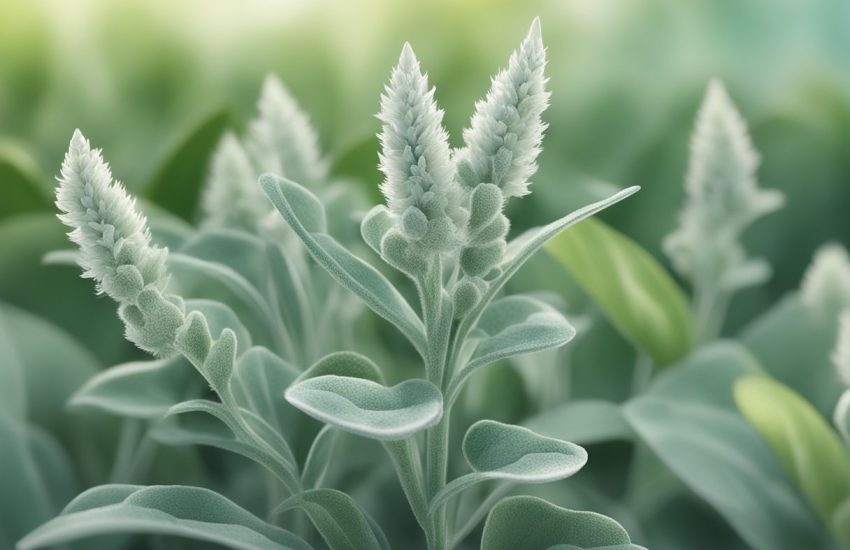Weeds with Blue Flowers: Identification and Control
Weeds with blue flowers are a common sight in many gardens and natural areas. These plants are often considered a nuisance due to their ability to spread rapidly and take over large areas. However, many of these weeds with blue flowers are also beautiful and can provide important benefits to the ecosystem.

One of the most common weeds with blue flowers is chicory. This plant is often found along roadsides and in fields, and is known for its bright blue flowers that bloom in the summer. Despite being considered a weed, chicory has a long history of medicinal and culinary uses, and is still used today in some cultures as a coffee substitute.
Another weed with blue flowers that is often found in gardens is borage. This plant is known for its star-shaped blue flowers that bloom in the summer and attract pollinators like bees and butterflies. Borage is also edible and has a long history of medicinal uses, including as a treatment for respiratory and digestive issues. Despite its many benefits, borage can also be invasive and difficult to control in some areas.
Identifying Weeds with Blue Flowers
Weeds with blue flowers are common in gardens and landscapes. They can be difficult to identify, especially for novice gardeners. This section will provide characteristics of common blue flower weeds and methods of identification.
Characteristics of Common Blue Flower Weeds
Blue flower weeds can have different leaf shapes, sizes, and textures. Some common characteristics of blue flower weeds include:
Blue flowers: As the name suggests, blue flowers are the most obvious characteristic of blue flower weeds. However, some blue flowers can be shades of purple or lavender.
Alternate leaf arrangement: Blue flower weeds usually have alternate leaf arrangement, which means that the leaves are not opposite each other on the stem.
Simple leaves: Most blue flower weeds have simple leaves, which means that the leaves are not divided into leaflets.
Stems: Blue flower weeds can have either hairy or smooth stems.
Some common blue flower weeds include:
Chicory (Cichorium intybus): This weed has blue flowers that resemble dandelions. The leaves are toothed and have a basal rosette.
Forget-me-not (Myosotis spp.): This weed has small blue flowers with yellow centers. The leaves are hairy and lance-shaped.
Speedwell (Veronica spp.): This weed has blue flowers that are small and clustered. The leaves are opposite and have toothed margins.
Methods of Identification
Identifying blue flower weeds can be challenging, especially when they are not in bloom. Here are some methods of identification:
Look at the leaves: The shape, size, and texture of the leaves can help identify blue flower weeds.
Look at the stem: The stem can be hairy or smooth, which can help narrow down the identification.
Look at the flowers: The color, size, and shape of the flowers can help identify blue flower weeds.
Use a plant identification app: There are many apps that can help identify plants by taking a picture of the plant.
In conclusion, identifying blue flower weeds can be challenging, but by looking at the characteristics of the leaves, stem, and flowers, and using a plant identification app, gardeners can identify these weeds and take appropriate action to control them.
Types of Blue-Flowered Weeds
Blue-flowered weeds are a common sight in gardens and fields, and they can be either annual or perennial varieties. In this section, we will discuss the different types of blue-flowered weeds and their characteristics.
Annual and Perennial Varieties
Annual blue-flowered weeds are plants that complete their life cycle in one growing season. They grow, flower, and produce seeds before dying off. Some examples of annual blue-flowered weeds include forget-me-not, asiatic dayflower, chicory, and speedwell.
Perennial blue-flowered weeds, on the other hand, live for more than one growing season. They can be either herbaceous or woody. Some examples of perennial blue-flowered weeds include commelina communis, blue oxalis, germander speedwell, and siberian squill.
Invasive and Native Species
Invasive blue-flowered weeds are plants that are not native to a particular area but have been introduced and have spread rapidly, often causing harm to the ecosystem. Some examples of invasive blue-flowered weeds include carpetweed, slender speedwell, creeping bellflower, and bugloss.
Native blue-flowered weeds, on the other hand, are plants that are naturally found in a particular area. Some examples of native blue-flowered weeds include viper’s bugloss, self-seeding blueweed, echium vulgare, and common blue violet.
It is important to note that not all blue-flowered weeds are harmful or invasive. In fact, some blue-flowered weeds, such as bush vetch, columbine, henbit, and tiny bluets, can be beneficial to the ecosystem by providing food and habitat for pollinators.
Overall, understanding the different types of blue-flowered weeds and their characteristics is important for proper identification and management.
Cultivation and Ecological Impact

Effects on Lawns and Gardens
Weeds with blue flowers, such as green alkanet (Pentaglottis sempervirens) and borage (Borago officinalis), can be a nuisance in lawns and gardens. They can quickly spread and compete with desirable plants for nutrients and water, causing a decline in their growth and health. In addition, their lanceolate leaves and star-shaped flowers can make them difficult to remove by hand.
However, weeds with blue flowers can also serve as a green manure or cover crop in gardens. They have deep roots that can help to break up compacted soil and improve its drainage. When tilled into the soil, they can add organic matter and nutrients, making the soil more fertile for future plantings.
Benefits to Ecosystem
Weeds with blue flowers can also have ecological benefits. They provide a source of nectar and pollen for bees and other pollinators, which are essential for the reproduction of many plants. In addition, they can provide habitat and food for other wildlife, such as birds and butterflies.
Weeds with blue flowers, such as those in the Boraginaceae family, are adapted to grow in a range of conditions, including shady areas and well-drained soil. This means that they can thrive in areas where other plants may struggle to grow, providing important ecosystem services in areas that may otherwise be barren.
Effective weed management strategies, such as regular mowing and hand weeding, can help to control the spread of weeds with blue flowers in lawns and gardens. However, it is important to consider the ecological benefits of these plants and to avoid making exaggerated or false claims about their impact on the environment.
Control and Management Strategies

Mechanical Removal Techniques
Mechanical removal techniques are often the most effective way to control weeds with blue flowers. Hand-pulling is a common method, especially for small infestations. Deadheading can also be effective in preventing the spread of weeds with blue flowers. Mowing is another option, but it is less effective as it can promote the growth of these weeds.
Chemical Control Methods
Chemical control methods can be used to control weeds with blue flowers. Herbicides such as glyphosate, 2,4-D, and dicamba can be effective, but they should be used with caution. These chemical weed killers can harm other plants and animals in the area, so it is important to follow the instructions carefully.
Preventative Measures
Preventative measures can help to reduce the spread of weeds with blue flowers. Regular monitoring of the area can help to identify new infestations early. It is also important to clean equipment and vehicles that may have come into contact with these weeds to prevent their spread. Additionally, maintaining healthy soil and promoting the growth of desirable plants can help to prevent the growth of weeds with blue flowers.
Overall, controlling and managing weeds with blue flowers requires a combination of mechanical removal techniques, chemical control methods, and preventative measures. By using these strategies, it is possible to effectively control the growth and spread of these weeds while minimizing harm to other plants and animals in the area.
Weed Identification and Removal Tips

When to Engage in Weed Control
Identifying weeds with blue flowers can be challenging, but it is important to engage in weed control before they spread and become a nuisance. The best time to control weeds is during their early growth stages, which is usually in the spring.
Tools and Techniques for Effective Removal
There are several tools and techniques that can be used for effective removal of weeds with blue flowers. Mowing can be effective in controlling weeds, but it may not completely remove the roots. Hand-pulling is another method that can be effective, but it can be time-consuming.
For more efficient removal, herbicides can be used. However, it is important to choose the right herbicide for the specific type of weed and to follow the instructions carefully. Some herbicides may not be effective on certain types of weeds, and using too much can harm other plants in the area.
In addition to herbicides, there are also natural control methods that can be used, such as mulching and planting cover crops. These methods can help to prevent weeds from growing by blocking sunlight and providing competition for resources.
Overall, it is important to identify weeds with blue flowers early and to choose the appropriate removal method. By doing so, you can effectively control the spread of weeds and maintain a healthy garden or landscape.
Frequently Asked Questions

How can I identify common weeds with blue or purple flowers?
Identifying weeds with blue or purple flowers can be challenging as there are many different species. However, some common weeds with blue or purple flowers include chicory, blueweed, and bluebells. These weeds can be identified by their distinct blue or purple flowers and their often invasive growth habits.
What are the characteristics of invasive weeds with blue flowers?
Invasive weeds with blue flowers often have aggressive growth habits, spreading quickly and outcompeting other plants in the area. They may have deep roots or rhizomes that make them difficult to remove, and they may produce large amounts of seeds that can quickly establish new populations.
How can I effectively remove weeds with small blue flowers from my lawn?
Removing weeds with small blue flowers from your lawn can be challenging, but there are several effective methods. Hand-pulling can be effective for small infestations, while larger infestations may require herbicides or mechanical removal. It is important to follow all safety precautions and label instructions when using herbicides.
Are there any particular weeds with blue flowers that are native to California?
Yes, there are several native California plants with blue flowers, including lupine, blue-eyed grass, and California bluebells. These plants are an important part of the local ecosystem and should not be removed or controlled as weeds.
Can you provide guidance on controlling tall weeds with blue flowers?
Controlling tall weeds with blue flowers can be challenging, as they often have deep roots and may require mechanical removal or herbicides. It is important to identify the specific species of weed and choose an appropriate control method based on its growth habits and location.
What steps should I take to manage blue alkanet in my garden?
Blue alkanet is a common weed with blue flowers that can be difficult to remove. Hand-pulling can be effective for small infestations, while larger infestations may require herbicides or mechanical removal. It is important to wear gloves and protective clothing when handling blue alkanet, as it can cause skin irritation.


